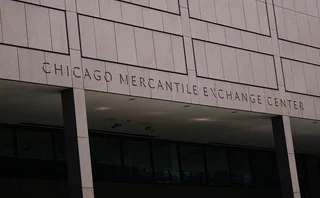
Fixed income gains interest in Australia
Australia has one of the highest concentrations of equity investments compared with fixed income anywhere in the developed world. But interest in ‘fixed interest’, as it is often termed down under, is growing. Christopher Jeffery reports

Investors, distributors and issuers gathered at the Westin hotel in Sydney on April 28 for Asia Risk’s Australian Fixed Income Forum. Their objective was to discuss and debate developments in the fixed-income business, including the macroeconomic forces shaping the Australian market, trends in debt financing and securitisation, the outlook for corporate and kangaroo bonds, the build-out of the linker market, and the relative trade-offs between government and semi-government debt.
The day started
Only users who have a paid subscription or are part of a corporate subscription are able to print or copy content.
To access these options, along with all other subscription benefits, please contact info@risk.net or view our subscription options here: http://subscriptions.risk.net/subscribe
You are currently unable to print this content. Please contact info@risk.net to find out more.
You are currently unable to copy this content. Please contact info@risk.net to find out more.
Copyright Infopro Digital Limited. All rights reserved.
As outlined in our terms and conditions, https://www.infopro-digital.com/terms-and-conditions/subscriptions/ (point 2.4), printing is limited to a single copy.
If you would like to purchase additional rights please email info@risk.net
Copyright Infopro Digital Limited. All rights reserved.
You may share this content using our article tools. As outlined in our terms and conditions, https://www.infopro-digital.com/terms-and-conditions/subscriptions/ (clause 2.4), an Authorised User may only make one copy of the materials for their own personal use. You must also comply with the restrictions in clause 2.5.
If you would like to purchase additional rights please email info@risk.net
More on Interest rate markets
New benchmark to give Philippine peso swaps a fillip, post-Isda add
Isda to include new PHP overnight rate and Indonesia’s Indonia in its next definitions update
SABR convexity adjustment for an arithmetic average RFR swap
A model-independent convexity adjustment for interest rate swaps is introduced
NatWest Securities US Treasury trading head departs
Jason Sable joined the UK bank in January 2022 from BNP Paribas
CME in talks to clear term SOFR basis swaps
US clearing house has held discussions with some dealers about clearing term SOFR-SOFR packages
Risky caplet pricing with backward-looking rates
The Hull-White model for short rates is extended to include compounded rates and credit risk
The curious case of backward short rates
A discretisation approach for both backward- and forward-looking interest rate derivatives is proposed
Cross-currency swaps will use RFRs on both legs, says JP exec
Despite slow start, all-RFR swaps will become the market standard within a year, according to Tom Prickett
June mid-month auctions – Coupon and yield trends
As Treasury issuance amounts set new records, coupons at the front end of the curve have marched downward, while back-end coupons have lagged. Yield spreads across each popular measure show a consistent steepening of the curve through the first half of…








